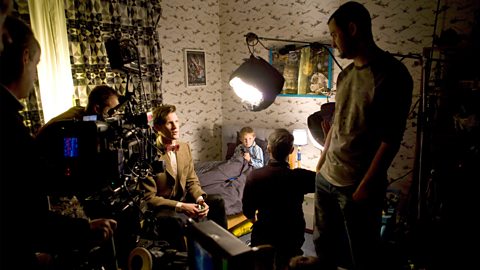Add mood and meaning
In film-making, the term lighting refers to how light has been used by the cinematographer and director.
At its most basic level, lighting allows film-makers to capture an image in the first place.
Most film-makers however, want to do more than just create images we can see clearly. Instead they want to create scenes where the lighting itself adds mood and meaning.
Just as a musical score can make a scene seem happy or sad, different lighting styles can change the tone of a scene.
Types of lighting
There are a number of basic types of lighting that are used for different effects in film.
Guidance on how these effects are practically achieved can be found in the production skills section.
There are just two basic light sources used to create most lighting styles:
- the key light is the primary and brightest source of light, placed to the side of the camera and pointed at the scene or subject
- the fill light is a secondary light source used to balance out the key light and change the level of shadow
It is also important to consider the following techniques and the atmosphere they create;
High key
In high key lighting a powerful key light source is balanced with fill lights to give us a brightly lit image with little or no shadows.

High key lighting is commonly used in sit-coms, childrens movies and romantic comedies.
Low key
In low key lighting set-ups the amount of fill lighting is minimized, helping to create shadows and darker areas.

Low key lighting is commonly used in crime thrillers, horror movies and dramas.